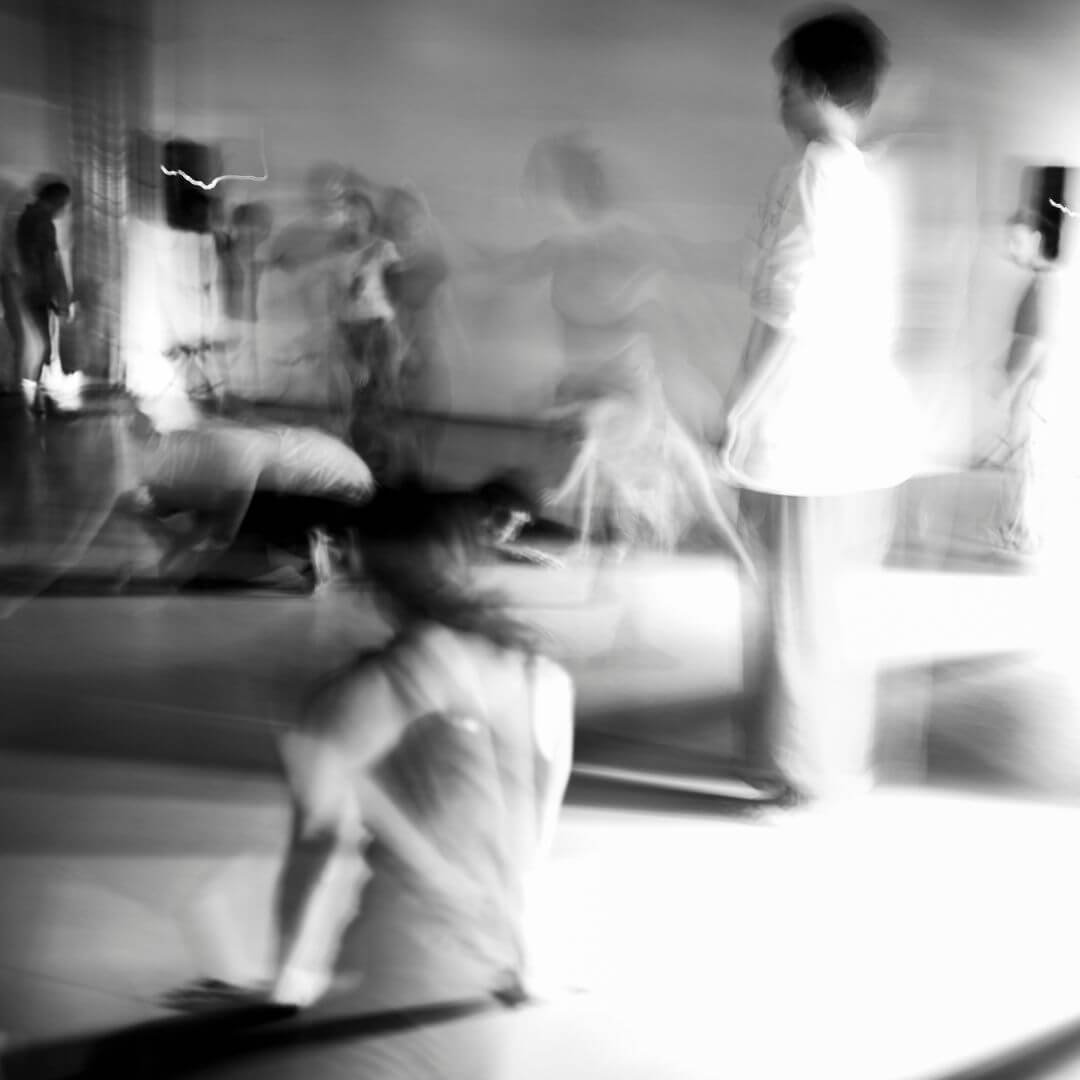What does it mean to improvise, and what decisions are at play when composing instantly? What potentials emerge when composing collectively?
The Labs are organized into three parts: warm-up, improvisation training, and, finally, instant composition. As the Lab progresses, the boundaries between each part of the class blur, with the aim of gradually arriving at a global class concept governed by our main premise: we are constantly composing and creating in real-time.
Part I: Warm-Up
SLMFV begins each class with a block of improvisations aimed at warming up while dancing. The main idea of this block is to understand temperature as a scenic variable, developing and nurturing our connection with it. The warm-up ritual consists of four compositions, each lasting the duration of one musical track (always different).
Part II: Improvisation
Training In this segment of the lab, we focus on training the body for performance. The practice proposed is the same as that for improviser training, with the difference that the duration of the exercises may be slightly longer. We train differentiation, coordination, design, tone, and mobility of body parts. We seek to consolidate a dance (at a postural level) that involves the body in its most global sense, full of meaning and discourse, whatever its nature may be. This translates into specific exercises that vary according to the group and the moment. The main objective of the training is to emancipate the performer from predominant creation logics and give them 100% creative value and responsibility for what they will do on stage. For this reason, in this space, we do not work from or for any specific physical language. We work on dance and the richness of each specific body, aiming to enhance what exists without discursively influencing any proposal.
Part III: Instant Composition
The compositional perspective permeates the entire class. However, in the last part of each session, SLMFV focuses directly on the practice of instant compositions. In this process, pieces are composed while allowing more space for observation, collective feedback, group debate, and the analysis of each piece. All this is to understand discursively how to name and understand what we are creating. This is the workshop moment where we focus on fully studying the performer’s relationship with sound, lighting, costume, and/or set design, depending on the resources available at the Lab’s location. We stop training to start creating. As the group develops its level of composition, this segment of the class gains prominence.

